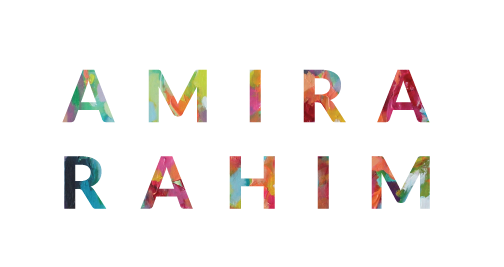Reclaiming the Veil: One Artist's Vision
/Collage work in my upcoming abaya paintings. These are found papers featuring Klimt.
Hello! Ramadan Mubarak to all of those fasting out there! It's officially the month of Ramadan, and in the spirit of the occassion, I've been reflecting and having much more quiet to process my thought. Not having to stop to feed my cravings or quench my thirst every 30-60 minutes, albeit straining, can bring about a tremendous amount of clarity.
In writing this, I became aware of my own unique position as an American, as a convert, and as an artist. All of these identities have shaped my experiences and how I process the world around me, particularly the "Islamic World". Many times, like my western counterparts, I stand as a purveyor and observer into an incredibly rich and layered way of life that I have come to adopt as my own for the last 7 years.
From an early age, you could say I had wanderlust. I was never content with staying in the confines of the Newark city upbringing. I knew there was more out there. By high school, I had become a nationally competitive Lincoln-Douglass debater, traveling to Texas, Chicago, Boston, and Connecticut. By college, I had committed to learning Portuguese (simply after discovering music I had liked) and spent a summer in Brazil at 18 years old. And after embracing Islam during my last year of college, my circle of friends had expanded in a way that was more reflective of my worldview. I was a global citizen, and I truly felt connected to the human experience through the lens of a religion that dates back over 1,400 years ago.
"The Wedding II" 24x24" acrylic on canvas, Available
Through that connectedness, I broke bread with Muslim women from Sudan, Somalia, Turkey, Tunisia, Bangladesh, Pakistan, Afghanistan, Malaysia, and more. Many of these women are still my dear friends today. I remember forging relationships with them and being in awe of the rich histories that they carried. They were not like ordinary women. They possessed a quiet confidence, an allure, a deep understanding of who they are and what they believe in. I knew that if I was ever afforded the chance, I would depict them somehow, if not in the novels I had dreamed about writing, then in my paintings.
Fast forward to my present life as a working artist in Abu Dhabi, United Arab Emirates. I had never even heard of this small desert metropolis until recently, but you could say it was a happy accident. In the UAE, the Emirati women pledge a strong allegiance to their young nation and old culture. We witness this in the most apparent manner by their dress code: long flowing, jet black "abaya" or cloak, embellished with the finest craftsmanship and scented with the best perfumes money can buy. They don the veil or "hijab" in a bolder manner, revealing freshly styled hair underneath a sheer layer of fabric. It confuses most visitors and amuses the many expats living here, to say the least. For me, quite simply, I had found my muse.
For months and moths, I toyed around with ways to capture the many images of Muslim women I had found both here and throughout my travels. While I kept working through abstract paintings, and eventually finding a colorful way to capture my camels, I continued to search for ways to paint them in a manner that suited my artistic vision and style. I needed it to happen organically and in my own way.
Today, I have found their faces on my canvas, and in patterns and colors that speak to me. These paintings have been described as being both haunting and beautiful, mysterious, yet serene. They are spiritual and yet not so serious. They are the Muslim women that I know and identify with.
"Omani Procession" 24x32 acrylic and oil pastel on canvas, View
I have left each of them faceless, because I do not think that they need a face. There's no emotions to express on their countenance, and yet you can feel the emotions from the figures themselves. Ironically, this is often how I feel as a Muslim woman in the complex world we live in today. Faceless. Without feeling or emotion. As if I am just a cloak or the scarf that encircles my head when I leave my home.
And yet, my painting are so much more than that. I never wish to set out on any political message or to answer to anyone's claims. More often than not, while I am creating these paintings, more questions arise for me than answers. Because they are portrayed abstractly, they can be from any place, from any country, and from any time period. Are they Muslims in the time of the Byzantine Empire, are they Muslim women in Africa, are they women today, striving for their voices to be heard on both sides of the table?
Perhaps, the biggest question of all is, what if, even though they are covered, even though they are veiled, what if they are happy? And not in spite of their religion, but because of it?
"Sisters" and "Tahajjud" 24x24" acrylics on canvas
This is a continuous question for me and where I am in my own journey as an artist and painter. Thank you for reading this and following my paintings along the way!,








